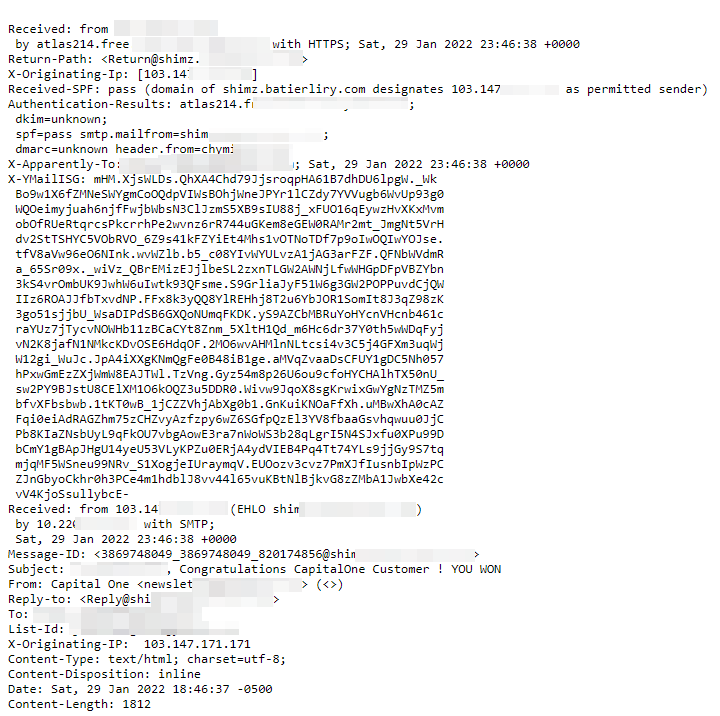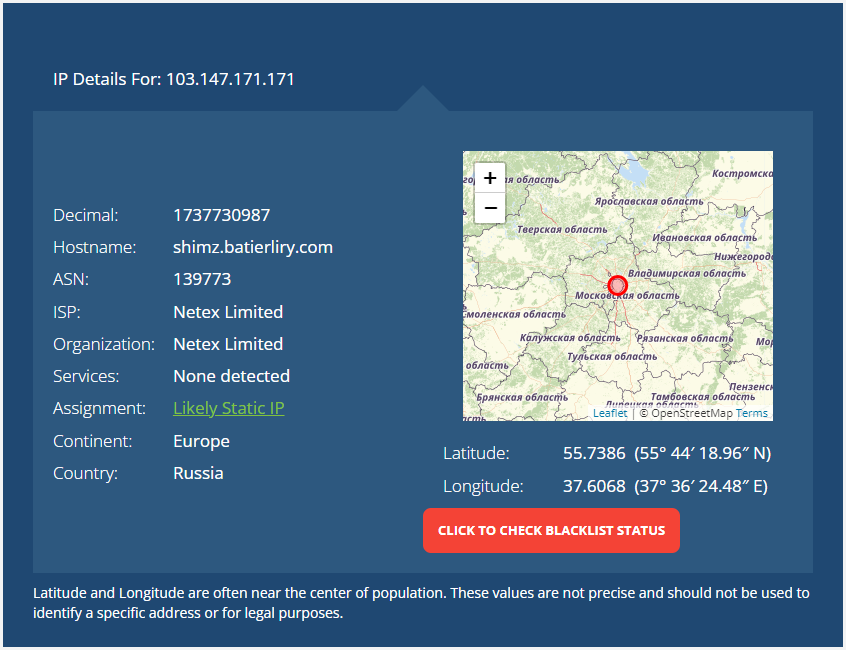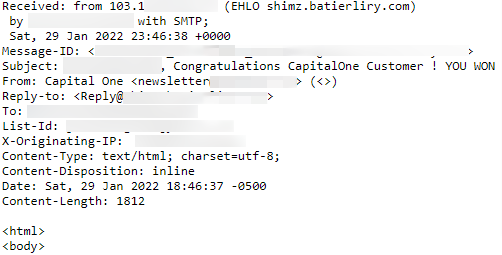If you have received an unsolicited email with a reply address appearing it is from this website, I can admit that it is not. The best advise I can give you is, quit entering your email address on sketchy websites!
The last part doesn’t apply 100% of the time. Sometimes your email address and personal details are stole, sold, traded, and used for malicious purposes from companies every day. You just happened to be on the receiving end.
Like all scam emails, they are usually generated from another email server other than from the actual sender that they are appearing to be. Small cases are when a company’s email server is hacked.
Capital One, PayPal, and Chase Bank, just to name a few, are some of the official companies that scammers like to emulate and send phishing emails to try and collect your personal information.
Please use caution when opening a scam email, do not enter any personal information and don’t download any attachments.
To check whither or not an email is definitely sent from a particular entity, check the email headers. Every email client will allow you to do this. The “raw message” and “headers” of an email contain what is similar to the mailing addresses of the email.
For example, on Yahoo Mail, right-click the email in question and select “View raw message”.

The screenshot is an example of an email header. As you can see the “From” is imitating Capital One but has a completely different email address than the official Capital One Customer Service reply email address and domain.
I have left the “X-Originating-IP” unblurred in the header. Let’s do a Reverse IP Lookup shall we?

As you can see, the email header reveals the IP address 103.147.171.171. When we enter the IP address into an ICANN (Internet Corporation for Assigned Names and Numbers) reverse lookup system such as WhatIsMyIPAddress.com, it reveals the phishing email originated from a server in Russia. Definitely not Capital One’s official email server.
There isn’t anything that Capital One can do when someone sends a phishing email from another server. It does no one any good by getting mad at Capital One for being the recipient of a scam email when they know nothing about it and it originated outside of the Capital One’s digital infrastructure. Same goes for this website.
It’s the same as a scam phone call or robocall, and it appears it is from another phone number until you try and call the phone number back and it’s disconnected or belongs to someone that never knew their phone number was being used in such a manner.
This is the same as a scam email. It is sent from another server. They can be sent with whatever reply email the scammer wants to put on the email, but the headers never lie.

